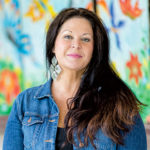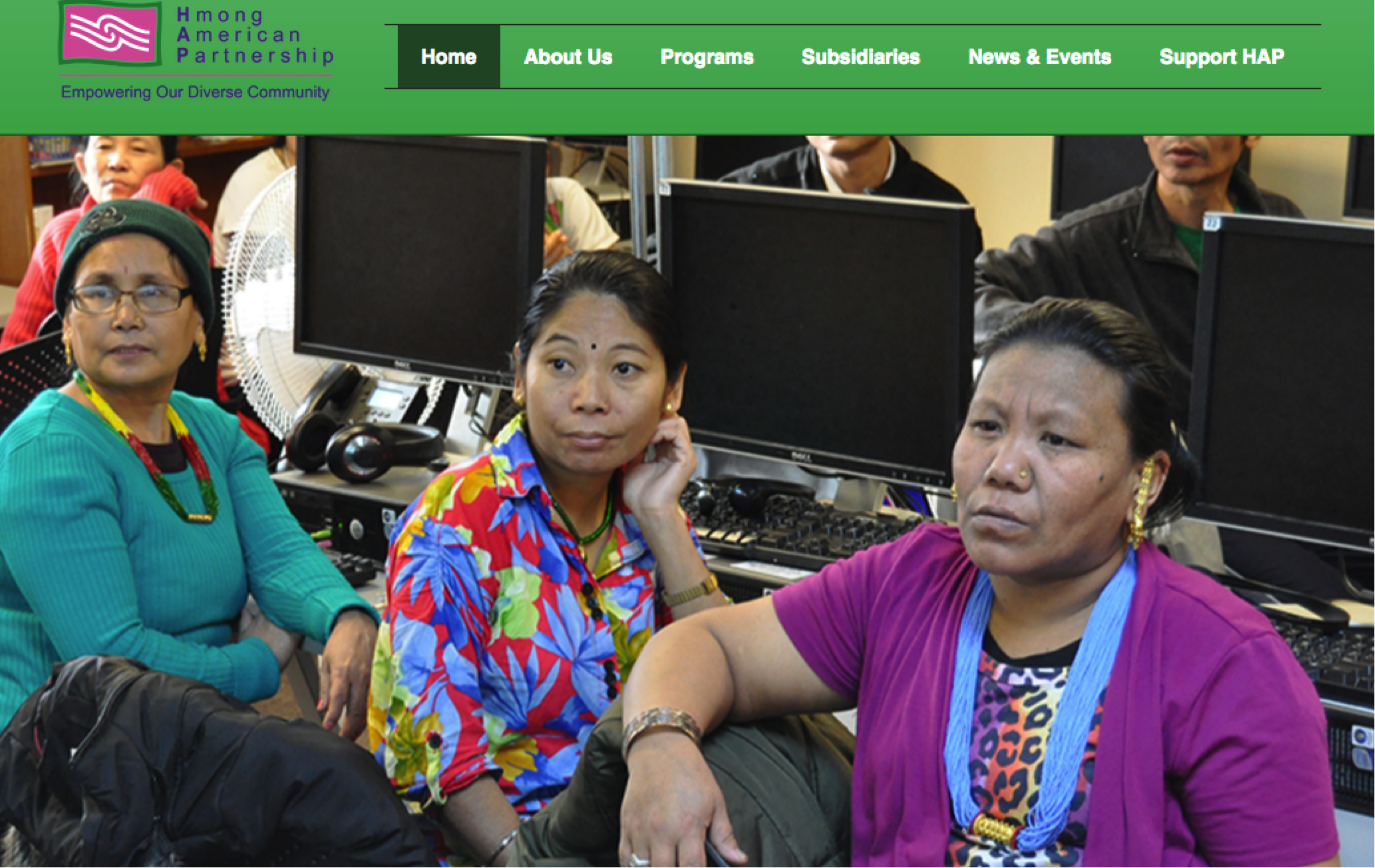This article describes the benefits of employing a constructivist approach in language education classes for refugee youth.
I once knew a Karen1 girl born in 1993, amidst a lush jungle surrounding bamboo-thatched memories. Strapped to her grandpa’s back, hearing his labored breathing, feeling the salty sweat drench her face as it hid in the back of his neck. Long gone was her mother, her father killed in the cause, and her grandfather was now her sole caregiver. He was once a farmer, a carpenter, a pastor, a man of great wisdom and the village storyteller. Time had stolen his years, war had carved deep creases in his brow, and his once jovial laugh had turned to unintelligible murmurings under his breath. From Myanmar across to Thailand into a refugee camp for the next seven years, grandfather’s eyes have now forever been closed, and his spirit has returned to his younger years in Myanmar before the war.
This girl, now orphaned and alone is brought to America to live with her aunt. Walking into her first American classroom with foreign eyes burning through her skin, she holds back her tears, smiles meekly, trying to hide her heartbeat almost exploding through her chest. She sits down, hopes the teacher doesn’t call on her, and that she can just make it through the day.
This young girl is one girl of many students. She is one of many students from non-native tongues, finding themselves in a new country, a new culture, a new life, but whose hearts may be thousands of miles away.
Classroom Community and Connecting with Learners
Is it impossible to think that we could connect with each of our learners in a way that would break down walls, differences in cultures, religions, languages, beliefs, to see that the heart beating in her is as beautiful as the heart beating in you? Just as each of our loved ones had a dream for us in our earlier years, there is a dream in each of them. If the dream that belongs to that little girl is allowed to reveal itself and flourish, it could change the world and it could benefit society. The realization of her dream could allow one more child’s voice to be heard.
In each classroom across this state there can be a catalyst of transformation for growth and of community. How we view the classroom environment varies from one educator to the next, but what is integral to the heart of the classroom should not be as differentiated as the instruction we teach. A focus on community building through a constructivist lens will allow youth like this Karen girl to feel validated, accepted, and a crucial part of the whole.
My greatest wish is that every person in the world understands that educating and treasuring our children is the only hope we have for a better future. The way in which we choose to approach educating our children is on the shoulders of educators. We need to see our youth as thoughtful and intelligent human beings whose perspective should be valued. In a constructivist environment, a shared responsibility for a vision needs to be employed. Through the means of collaboration, the importance of a constructivist-learning environment takes shape where different opinions are valued and a community is built through a process of steps. Then, the benefits of this constructivist-learning environment become evident.
Almost two years ago, I had an idea, a grand idea: 25 students, all English learners in my high school humanities class, would put on a play that would change their perspectives and the perspectives of those around them. Their journey towards peace, reconciliation, and self-validation would emerge while building a community. This play would be a culmination of the students’ work based on social justice and advocacy through the means of collaboration. Creating a constructivist environment would be the key to “liberate their minds to construct personal beliefs about truth and value” (DeVries & Zan, 2005, p. 142). It would be my job to focus on the learners’ needs and “help them construct new concepts” (Cowey, 2005, p. 210).
Why is a Constructivist Learning Environment Important?
When we refer to environment, most people understand it to mean what surrounds us, but a constructivist environment has two meanings. Environment “refers to the totality of permanent objects and their relations that we have abstracted from the flow of our experience” and “the surroundings of the item we have isolated” (von Glasersfeld, 2005, p. 5). We perhaps forget the item and those things that surround it are also a form of our experiential field, “not an observer-independent objective world” (von Glasersfeld, 2005, p. 5). It is important to note that when a teacher envisions a constructivist-learning environment in his or her classroom, it is the individual students who must co-create the environment. Since every person constructs knowledge in a different way, there are no identical constructs occurring among individual students, although they may be compatible with one another. The teacher may come to realize that students view their environment differently than they do. In a constructivist classroom, the educator’s job is “not to dispense knowledge but to provide students with opportunities and incentives to build it up” (von Glasersfeld, 2005, p. 7). How does an educator begin to implement this type of milieu? The following five steps contribute to building a constructivist-learning environment.
How to Build a Constructivist Learning Environment
Step 1: Establishing Community Rules
First, a constructivist-learning environment is created when community rules are established. It may be standard for the teacher to determine the rules in a classroom, according to how they want the students to act; however, when a teacher dictates the rules for a classroom, it “can lead to mindless conformity in moral and intellectual life” (DeVries & Zan, 2005, p. 148). The teacher takes an “expert” attitude that does not transform; rather, the teacher expects the student to mold to what he or she wants. The class as a whole should create the rules according to how everyone expects the environment to function. DeVries & Zan (2005) write that the objective of the students making the rules is:
to promote feelings of necessity about rules and fairness, to promote feelings of ownership and commitment to classroom rules, procedures, and decisions, and to promote feelings of shared responsibility for what goes on in the class and how the groups gets along together (DeVries & Zan, 2005, p. 139).
This is the genesis of creating community and in turn, there is a vested interest from each member of the class. They understand that the decisions belong to them.
What could this look like in a classroom? In my humanities class, they came up with a list of a few rules they saw as the most important in small groups. Then, one member from each small group jigsawed to form a new group. In the new group, they chose two rules they thought were the most important for the class, such as ‘everyone needs to participate’, or ‘no laughing when someone is acting’. Then the class came together to voice their rules. A spokesperson from each group read the rules. If a rule came up multiple times, it was recorded as such. The top five rules became the official for the class. In this way, the students felt they had created a democratic environment based on equality and mutual respect. They were more willing to contribute because a feeling of common ground had been established. This was evident in their behavior toward each other and myself. The students were given choices and were able to make more decisions to shape their environment; in turn, they were more invested.
Step 2: Shifting a Teacher’s Paradigm
After establishing co-created rules, a teacher needs to shift his or her thinking about what an ideal classroom environment looks like. Genuine classroom community encourages multiple perspectives and building communication skills. When a group of people comes together for the first time, trepidation and anxiety may be hidden just below the surface. It does not take long before those feelings emerge. How a teacher deals with this can make or break the building of community. The teacher needs to be able to step out from behind the desk and join the students by being more ‘present’ in the class and with the learners. When teachers shift the paradigm of what teaching should look like, they are able to help transform the classroom environment (hooks, 1994). Rather than viewing the teacher as the giver of knowledge and the learners as the ‘vessels’ in which information is fed into and stored, hooks proposes that we become part of the class, on a level playing field with the students. Students are very receptive to this form of mutual respect. When a teacher models and invests in the students, students reciprocate in a plethora of ways; personalities become more apparent and relationships deepen. A community is being created. Block (2009) asserts that part of building community is that “we need to advance our understanding of the nature of communal or collective transformation” (p. 4). He continues to explain that even though we know more about individual transformation, we are naïve “in the belief that if enough individuals awaken, and become intentional and compassionate beings, the shift in community will follow” (Block, 2009, p. 4). Shifting from the focus being on your own self to the collective means investing in the future of the community you are trying to build.
Step 3: Individualism to Pluralism
Third, the students and teacher must move from individualism to pluralism “to create a new story” (Block, 2009, p. 37). Each educator has the opportunity to view education in a new way. They can still hold on to the standards, curriculum and initiatives being passed down to them, while co-creating community and encouraging transformation in the classroom. From the conversations we have with each other an alternative future can emerge.
What can we create collectively? Community within the classroom should not just be a possibility; it should be the future we choose to live in. Moving from individualism to pluralism allows a community to have faith in its members. “It helps us to leave behind our penchant for seeing our disconnectedness as an inevitable consequence of modern life and moves us toward accountability and citizenship” (Block, 2009, p. 54). In the humanities class, we stopped to recognize each other as citizens of our community. We slowed down and connected with one another every day whether through a simple five-minute opener of sharing the previous night’s events with a partner to sharing a personal thought on a question of the day. Regardless of what the activity was, the value was in creating connections and building partnerships. These are small, discreet, important ways of creating a constructivist-learning environment that build upon one another each day.
One example of how we connected on a daily basis is illustrated in the following example, where I was involved in this daily practice with the learners.
Each student partnered up with a new person. They sat on the floor, cross their legs, and had their knees connect to their partner’s knees. They would look at each other directly in the eyes for 30 seconds. When the time was up, they took a turn stating one thing they appreciated about the other person i.e., “One thing I appreciate about you is…” They also stated one thing they would like to learn about their partner i.e., “I would like to know…”
Step 4: Self-regulation and Cooperation
Fourth, self-regulation and cooperation lead to a stronger community. Self-regulation is the ability to monitor one’s own work and membership in a group, while working collaboratively with other members of the group. As with the building of any community, there are bumps along the way. How one chooses to handle those bumps defines the role each person plays in his or her community; being able to self-regulate actions can be difficult at the best of times. When you bring so many individual personalities together, not everyone will agree. Figuring out ways to take a step back and reflect on the situation before speaking can be more helpful than a voice that is always quick to speak. Working through an issue using cooperation and problem-solving skills tends to work better than being given a teacher-driven solution. If the students are successful at this, this will benefit them in the future when they are in situations with individuals whose opinions are contrary to their own. They will be able to figure out ways to problem-solve and create constructivist environments of their own. Piaget stated that, “adults’ cooperative relations with children result in active reflection in both moral and intellectual aspects of the child’s life” (as cited in DeVries & Zan, 2005, p. 136). Piaget refers to this type of relation as “autonomous” or “cooperative.” By not forcing rules unnecessarily upon a learner, the learner is able to think independently and creatively to develop “moral feelings and convictions that take into account the best interest of all parties” (DeVries & Zan, 2005, p. 137).
Self-regulation is one tool used to become a critical thinker. “Self-regulation fosters self-confidence, an attitude of questioning and critical evaluation, and motivation to think about causes, implications, and explanations of physical and logical as well as social and moral phenomena” (DeVries & Zan, 2005, p. 147). Self-regulation is a piece of critical thinking that I see lacking in a majority of my students. The ability to think critically about an issue and develop an opinion that takes into account multiple perspectives helps a student contribute academically, socially, and morally to the community they are in. As self-regulated critical thinkers, students have the tools to “search for patterns, raise questions, and model, interpret, and defend their strategies and ideas” (Fosnot, 2005, p. ix). Self-regulation equals more ownership of ideas. When students are able to take ownership of their own ideas while considering other’s perspectives, the tools for conflict resolution become more evident.
An example of this step from class would be the weekly goals that each person would set. Each learner was required to set a goal that would challenge him/her into doing something a step beyond his/her comfort level to take risks and invest in the community. One such goal a student made was to perform spoken word of an original piece of poetry in both his native language and English in front of the class. This a challenge for this learner because public speaking was extremely difficult for him. He tended to stutter when speaking in front of others. Because he made this his personal challenge, the students were behind him and anxious to hear the poetry they had read. On the final day of the week, he got up and presented beautifully. The students applauded excitedly, as they understood the courage it took for him to do this.
Step 5: Conflict Resolution
Lastly, conflict resolution is part of a constructivist-learning environment and is “an important constructivist goal” (DeVries & Zan, 2005, p. 142). Piaget understood conflict as important for development for the individual and between individuals. The interpersonal conflict “in facilitating the internal conflict by which an individual begins to take more perspectives into account” (DeVries & Zan, 2005, p. 142) is crucial. Components of the constructivist agenda are conflict and resolution. When a problem arises, the teacher does not step in and assert his or her authority; rather, he lets the students work out the issue and come up with a solution. If a solution is not reached, the teacher has the opportunity to suggest possible solutions that may be utilized, whereupon the students can proceed to resolve the problem. The teacher “upholds the value of mutual agreement” (DeVries & Zan, 2005, p. 142).
For example, in this particular class, we took time to discuss social-emotional issues that may be affecting the dynamics of the class. One such incident that occurred was bullying between a couple of the male students and one female student. The bullying occurred outside of class down in the cafeteria during lunch. Three of the male students in my class were calling the female student derogatory names based on her size that were insulting and shaming. When I asked if there were any issues to discuss for the day, the female student advocated for herself by naming the male students who were calling her names and repeating the phrases they had called her. We addressed the issue as a group, the male students took responsibility for their actions, apologized, and we discussed how words and actions may affect a person far beyond when the situation took place.
My students were developing into mature, critical thinkers in the process of building community as each day passed. Most every conflict was worked out to a feasible solution where the individual members of the class felt respected and heard.
The Benefits of a Constructivist Learning Environment
There are myriad benefits to learning in and teaching in a constructivist environment. Learners begin to be more reflective and independent thinkers in a constructivist-learning environment. It is at that “historical moment when one begins to think critically about the self and identity” (hooks, 1999, p. 47) that transformation and growth occur. The individual growth affects the collective, and community develops in an authentic and collaborative manner. Mindful engagement increases liking for people, not just objects and things (Langer, 1997). As quoted in hooks (1999), Friere writes, “authentic help means that all who are involved help each other mutually, growing together in the common effort to understand the reality which they seek to transform” (p. 54). This reality and the co-creation of this community are built on the “assets and gifts of its citizens, not from the citizens’ needs or deficiencies” (Block, 2009, p. 15).
Time and experience have shown me that there is always a way to teach to the individual and “foster intellectual, sociomoral, and affective development” (DeVries & Zan, 2005, p. 132). In order to create a constructivist classroom, mutual respect must be continually practiced in a sociomoral atmosphere, “the entire network of interpersonal relations that make up a child’s experience in school” (DeVries & Zan, 2005, p. 132). In this day and age of increased behavior management and a growing achievement gap, youth need teachers to be present and proactive in the classroom. Every day that I walk into my classroom, I am excited for the day and to get involved with all of my students. In education today, there are “a lot of people who don’t recognize that being a teacher is being with people” (hooks, 1994, p. 165). Educators need to acknowledge and take into consideration that shifting their paradigms should not be a fearful concept (hooks, 1999, p. 36). We are all connected to each other, and until humankind recognizes this, our youth suffer. A constructivist-learning environment means bringing ourselves to the table exposed, and through the means of conscience collaboration, a foundation for a strong and empowered community is built.
Conclusion
My humanities class ran its production of “On the Wings of a Crane,” and it was nothing short of spectacular. They pulled themselves together and put on a moving play. As I sat in the back and watched them bow, the audience stood and cheered, and that grand idea I had just months prior came to fruition because of them. Teary-eyed, I rose to my feet and applauded for a group of students who created their own constructivist-learning environment. And that Karen girl, well she was one of the performers, and her voice was definitely heard.
NOTES:
- Karen-An ethnic group originally from Burma. Forced to flee Burma by the Burmese military, many Karen resettled in refugee camps along the Thai-Burmese border.
References
Block, P. (2009). Community: The structure of belonging. San Francisco, CA: Berrett-Koehler Publishers, Inc.
Cowey, S. (2005). A first-year teacher implements a literature-based/whole-language program in a fourth-fifth grade. In Fosnot, C.T. (Ed.). Constructivism: Theory, perspectives, and practice (2nd ed.). New York: Teachers College Press.
DeVries, R. & Zan, B. (2005). A constructivist perspective on the role of the sociomoral atmosphere in promoting children’s development, In Fosnot, C.T. (Ed.). Constructivism: Theory, perspectives, and practice (2nd ed.). New York: Teachers College Press.
Fosnot, C.T. (Ed.). (2005). Constructivism: Theory, perspectives, and practice (2nd ed.). New York: Teachers College Press.
Gardner, H. (2007). Five minds for the future. Boston, Mass.: Harvard Business School Press.
Hooks, B. (1994). Teaching to transgress: Education as the practice of freedom. New York: Routledge.
Langer, E. (1997). The power of mindful learning. Boston, MA: Da Capo Press.
Senge, P. M. (2006). The fifth discipline: The art and practice of the learning organization (Rev. and updated.). New York: Doubleday/Currency.
von Glasersfeld, E. (2005). Introduction: Aspects of Constructivism. In Fosnot, C.T. (Ed.). Constructivism: Theory, perspectives, and practice (2nd ed.). New York: Teachers College Press.








